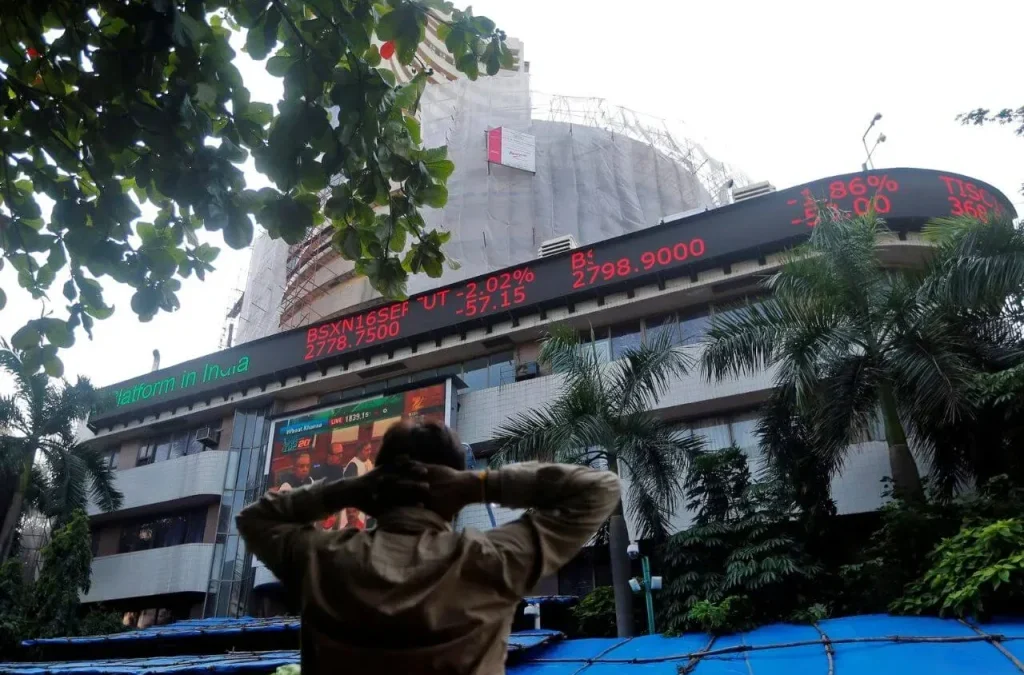Gold prices have experienced a sharp correction after reaching record highs, causing concern in the market. The precious metal “Gold” surged to an all-time high of $4,381.50 per ounce on October 20, 2025, but in just three days, it tumbled nearly 8.61 percent to hit a recent low of $4,004.20 per ounce on October 22, 2025. Currently, gold is trading around $4,097.57 per ounce, showing signs of some recovery but still well below its recent peak.
This sudden decline has affected gold-related financial sectors, especially companies that provide loans against gold. As gold acts as collateral for these loans, a fall in its value reduces the security for lenders, impacting loan margins and creating cautious sentiment among investors.
Another reason for the correction is profit booking after the recent rally, as traders looked to lock in gains. Globally, bullion markets are also showing pressure, with investors concerned that gold’s sharp rise had gone too far too fast. Technical indicators also show signs of overbought levels, suggesting that gold’s sharp surge may have exhausted bullish momentum.
Seasonal factors are playing a role as well. With India’s festival season nearing its end, physical demand for gold is slowing, leaving prices more vulnerable to declines. Analysts now expect further weakness in the coming months, with traders positioning themselves for continued downward movement.
Even after this recent fall, gold has shown remarkable strength, rising by up to 57.07 percent so far this year. Investors continue to view the metal as a safe haven amid global economic uncertainties. Its long-term outlook is further supported by expectations that the US Federal Reserve may cut interest rates by at least 25 basis points by the end of 2025. This potential easing of rates could boost gold demand, keeping investor sentiment positive despite short-term corrections.
Analyst Viewpoints:
Tejas Shigrekar, Chief Technical Research Analyst – Commodities and Currencies at Angel One Limited, said, “Gold witnessed a sharp decline of 385 points (8 percent) from its recent peak, marking a potential trend reversal after reaching historically overbought levels. Monday’s close recorded the highest monthly Relative Strength Index (RSI) ever observed, indicating exhaustion in bullish momentum and setting the stage for a corrective phase.”
He added, “We anticipate further downside into November and December. Investor sentiment has shifted, and traders are increasing their exposure to put options, positioning for continued weakness in the coming months.”
These observations indicate that gold prices may continue to face pressure in the near term, impacting sectors tied to gold financing and investor sentiment, while the market recalibrates after a historic rally.
Here are a few gold financing stocks that were affected as gold prices fell
Muthoot Finance Limited
With a market capitalization of Rs. 1,26,759.66 crores, the share of Muthoot Finance Limited has reached an intraday low of Rs. 3,107 per equity share, down nearly 5.12 percent from its previous day’s close price of Rs. 3,274.70. Since then, the stock has retreated and is currently trading at Rs. 3,160 per equity share.
The stock reached an all-time high of Rs. 3,377.90 on Friday, October 17, 2025, following a continuous decline over the past three days. The stock has reached a recent low of Rs. 3,107, marking a drop of 8.02 percent from its peak in three days. Over the last year, the stock has provided impressive returns of more than 64 percent and 166.49 percent over the last five years.
Muthoot Finance Limited was established in 1939 and is India’s largest gold loan non-banking financial company (NBFC) headquartered in Kochi, Kerala. It offers gold loans, personal and business loans, insurance, and money transfer services across more than 4,877 branches in India and abroad.
Muthoot Finance Limited reported its highest-ever gold loan assets under management (AUM), reaching Rs. 1,13,194 crore as of June 30, 2025. This marks a significant 40 percent year-on-year increase from Rs. 80,922 crore recorded on June 30, 2024.
Manappuram Finance Limited
With a market capitalization of Rs. 23,746.73 crores, the share of Manappuram Finance Limited has reached an intraday low of Rs. 277.90 per equity share, down nearly 2.87 percent from its previous day’s close price of Rs. 286.10. Since then, the stock has retreated and is currently trading at Rs. 280.45 per equity share.
On Friday, October 17, 2025, the stock reached a high of Rs. 291.50, following a continuous decline over the past three days. The stock has reached a recent low of Rs. 277.90, marking a drop of 4.67 percent in three days. Over the last year, the stock has provided impressive returns of more than 90.96 percent and 69.47 percent over the last five years.
Manappuram Finance Limited was established in 1949 by Shri V.C. Padmanabhan in Valapad, Kerala, and began as a modest pawn broking and money lending company. It offers secured loans primarily against gold jewelry, catering to underserved customers across India. It operates over 5,000 branches spanning 28 states and union territories.
Manappuram Finance Limited reported a strong performance in its gold loan portfolio, with consolidated gold loan assets under management (AUM) rising to Rs. 28,802 crore in Q1 FY25. This represents a 21.8 percent year-on-year increase from Rs. 23,647 crore recorded in the same quarter last year.
Written By – Nikhil Naik
Disclaimer

The views and investment tips expressed by investment experts/broking houses/rating agencies on tradebrains.in are their own, and not that of the website or its management. Investing in equities poses a risk of financial losses. Investors must therefore exercise due caution while investing or trading in stocks. Trade Brains Technologies Private Limited or the author are not liable for any losses caused as a result of the decision based on this article. Please consult your investment advisor before investing.
The post Gold financing stocks fall up to 5% as gold prices decline 9% over three days appeared first on Trade Brains.

